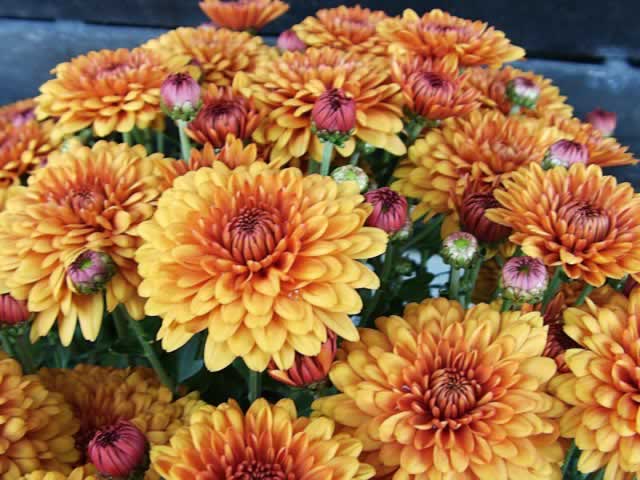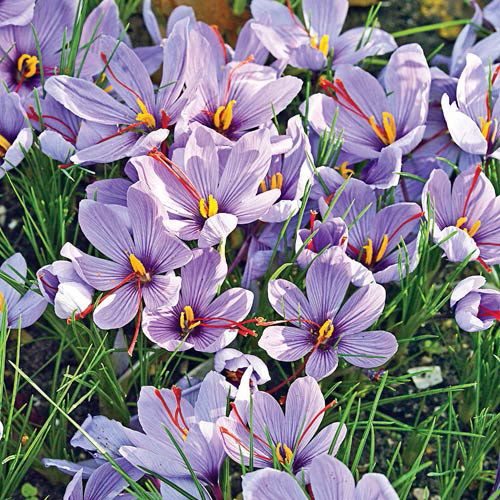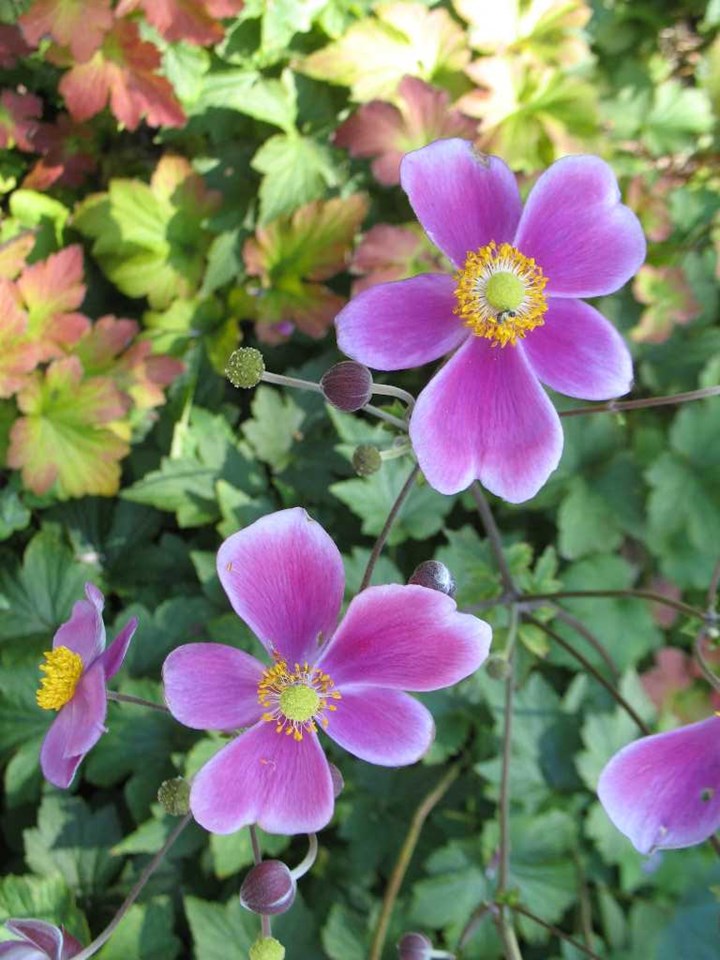
Welcome to Gardens By Danielle's blog! The blog will provide readers with tips and tricks for all things garden related, as well as give timely tips once a month. We hope you enjoy it!
Timely Tips...
The ideal time to plant spring blooming bulbs in this area is the fall between now and mid November. Spring blooming bulbs include Crocus, Daffodils, Tulips, Hyacinths, and Iris. This is because these bulbs need the entire winter to go through a chilling process, which will enable them to bloom in the spring. Crocus are usually the first to bloom, usually in late winter to early spring, depending on the cultivar. Daffodils are the next to bloom, followed by tulips, hyacinths and iris. Spring bulbs come in a whole rainbow of colors, variety of shapes and some are even fragrant. Here are some planting tips to help you get started:
-Plant in groups of 3-5, which will give more impact when they sprout.
-Use starter fertilizer when planting. You can add it to the hole when you plant. I like to use Epsoma Bulb Tone, but any balanced fertilizer that contains bone meal is good.
-Plant as soon as possible after your bulbs arrive and follow all planting instructions.
Where to Buy: I like purchasing bulbs from mail order sources, because you can get higher quantities, better quality bulbs and more selection of varieties than if you buy from a local garden center or a big box store. I will list reputable sources for mail order bulbs below.
Here are some of my favorite cultivars of spring blooming bulbs:
Crocus chrysanthus 'Advance'- Color: Yellow & Purple Height: 0-6" Full sun-part shade Bloom Time: Winter-Very early Spring
Crocus 'Orange Monarch'- Color: Orange Height: 0-6" Full sun Bloom Time: Very early spring
Narcissus 'Accent'- Daffodil- Color: Orange center and white petals Bloom Time: Mid Spring Full sun-part shade Height: 13-18"
Narcissus 'Dutch Master'- Daffodil- Color: Yellow Full sun-part shade Bloom Time: Early-mid spring Height: 13-18"
Hyacinthus orientalis 'Blue Jacket'- Hyacinth Color: Blue Bloom Time: Early-mid spring Full-part sun Height: 7-12"
Hyacinthus orientalis 'Pink Pearl'- Hyacinth Color: Pink Bloom Time: Early to mid spring Full sun-part shade Height: 7-12"
Iris (Dutch) 'Rendez Vous'- Color: Purple and Yellow Bloom Time: late spring Full sun Height: 19-24"
Iris (Dutch) 'Mystic Beauty'- Color: Purple and Yellow Bloom Time: Late Spring Full sun Height: 19-24"
Tulipa 'Beauty of Apeldoorn'- Tulip- Color: Red & Yellow Bloom Time: Mid spring Full sun Height: 13-24"
Tulipa 'Burning Heart'- Tulip- Color: Red, white and yellow Bloom Time: Mid spring Full sun Height: 13-24"
This is also a good time of year to cut back (to the ground) any perennials that are starting to die Bach or look brown. This is mainly spring and summer blooming perennials. The rest can be cut back next month.
Mail Order Sources for Spring Blooming Bulbs:
Brent & Becky's Bulbs: http://www.brentandbeckysbulbs.com/
Breck's Premium Flower Bulbs: http://www.brecks.com/
Timely Tips...
This time of year, gardens often start looking tired as the blooms of summer fade and die back. It's the end of the growing season for a lot of summer blooming plants. Fortunately, there are bulbs, annuals, and perennials that bloom in the fall and thrive in the cooler air. In this post, I will talk about some common (and maybe not so common) fall blooming annuals, perennials, and bulbs to add color to your garden during the cooler months of fall.
Annuals:
Viola x wittrockiana- Pansy- This annual is a member of the Violaceae (Violet) family and thrives in cool weather. It flowers throughout the fall until the first heavy frost. Flowers can be single or double and come in blue, purple, red, rose, yellow, apricot, maroon, white and bicolors. Pansies grow to 1/2-3/4" tall with a spread of 3/4"-1'. They thrive in full sun to part shade, attract butterflies and are edible. These colorful bedding plants are great for planting in the ground or containers.
Viola x wittrockiana- Pansy (Photograph Courtesy of: Missouri Botanical Garden)
Brassica oleracea- Ornamental Cabbage- Ornamental or Flowering Cabbage adds great color to the fall garden and thrives in cooler weather. It grows to a height of 1-1 1/2' tall and a spread of 1-1 1/2'. Plants are green, white, and different shades of pink and purple. They thrive in full sun and are great in the ground or seasonal containers.
Brassica oleracea- Ornamental Cabbage (Photograph Courtesy of: Missouri Botanical Garden)
Dendranthema x grandiflora- Chrysanthemum- Chrysanthemum, commonly called "Mums" are great plants for the fall garden or containers. They are bushy plants, full of small-large, daisy-like blooms, The flowers come in brown, red, white, yellow, pink, and red-orange. Other benefits of mums is that they attract butterflies and can be used for cut flowers. Mums grow to 1-2' tall and have a spread of 1-2'. These fall beauties grow well in part sun to part shade. Note: There are also perennial varieties, too.
Dendranthema x grandiflora- Chrysanthemum (Photograph Courtesy of: The Garden Helper)
Bulbs:
Colchicum byzantium- Autumn Crocus- When most people think of crocus, they think of bulbs that bloom in early spring, but there are also crocuses that bloom in the fall also. Crocus come in varying shades of pink and purple and bloom September-October. They grow to a height of 1/4-1/2" tall and have a 1/4-1/2" spread. These bulbs grow best in full sun to part shade and need to be planted in August.
Colchicum byzantium- Autumn Crocus (Photograph Courtesy of: Breck's)
Cyclamen hederiflolium- Hardy Cyclamen- Cyclamen are often thought of as an indoor plant that are grown in greenhouses and windowsills, but there is a variety of cyclamens that thrives in this area. This variety comes back every year and blooms in the fall. These beauties grow to a height of 4-6" and do well in part to full shade. The blooms come in colors of rose-pink and the foliage is heart shaped. Great for shade gardens!
Cyclamen hederifolium- Hardy Cyclamen (Photograph Courtesy of: Breck's)
Perennials:
Symphyotrichum novae-angliae- New England Aster- This type of Aster is native to this area and blooms August-September. The blooms are daisy-like and a deep pink-purple color. They grow to 3-6' in height and have a spread of 2-3'. New England Aster requires full sun and attracts butterflies.
Symphyotrichum novae-angliae- New England Aster (Photograph Courtesy of: Missouri Botanical Garden)
Anemone hupehensis- Japanese Anemone- These lovely flowers grow to a height of 2-3' tall and have a 2-3' spread. Japanese Anemone bloom August-September and the petals are rose-pink with yellow centers. They require full sun to part shade.
Anemone hupehensis- Japanese Anemone (Photograph Courtesy of: Missouri Botanical Garden)
I hope these plants help to brighten your garden this fall and keep your spirits up with summer being over. Stay tuned for the next post.
Sources:
Missouri Botanical Garden: Plant Finder. www.missouribotanicalgarden.org
Dendranthema x grandiflora: Chrysanthemum. University of Florida IFAS Extension. Edward F . Gillman. Copyright: October 1999. 7, September 2017.
Breck's. www.brecks.com
Timely Tips...
Spring is a busy time in the garden and the month of April is no exception. Here is a list of tasks that should be done this month, which I will be talking about in this post:
Dividing and transplanting hardy perennials, such as: Heuchera, Daisies, Hellebore, and Hosta
Cleaning up dead plant debris from around plants
Starting a compost pile
Building and prepping raised beds for planting
Installing supports/stakes for plants like Peonies
Giving flowering bulbs and tubers a head start indoors, examples include: Cannas, Dahlias, Caladiums, Begonias, Lilies, etc.
Cutting back last year's growth on Hellebores
Installing a trellis for peas
Planting asparagus
Divide and Transplant Hardy Perennials: This month, hardy perennials, such as Daisies, Hellebore, Hosta, and Heuchera can be divided and transplanted. The entire clump should be dug up before the next step can take place. This can be done with a sharp shovel. You can slice the plant right down the middle of the crown to cut it into half or into quarters, depending on how large the clump is. The divisions can either be transplanted into other areas of your yard or shared with neighbors, friends or family.
Clean Up Dead Plant Debris From Around Plants: If you haven't already done this task in the fall, it should be done now, before a lot of the new growth starts to sprout and grow. Sometimes, you can just do this by pulling it away with your hands, other times this task will require scissors or pruners to trim the old, dead foliage away. This is really important to prevent diseases, pests, and fungi which can cause problems with your plants when they start to grow new growth during the growing season.
Start a Compost Pile: There are many benefits of having your own compost pile. Compost can provide your plants with nutrient rich, organic fertilizer and mulch. Another important benefit of a compost pile is that it is sustainable, since your garden waste and food scraps can be discarded in it, where they decompose and become quality soil for use in your garden. These are just a few of the many benefits of compost. You can either devote a corner or area of your yard for compost or build your own compost bin out of almost any type of material. I have seen compost bins built out of cinderblocks stacked on top of each other, wooden pallets used for shipping, lumber, chicken wire and lots of other materials found around your house or at the local hardware store. There are also ready-made metal or plastic compost bins on the market, that have cranks that make turning and mixing your compost easier, though these are not necessary. You will need to position the compost pile in a shady area of your yard, so it can heat up to the proper temperature for decomposition. You can put things like leaves, grass clippings, fruit and vegetable peels, cores, and scraps, dead plant material and other forms of yard waste in the compost pile. Just don't use weeds, since weeds can start growing in a compost pile and take over. You will need to turn or mix your compost every now and then, so you may not want to make your compost pile too large. Here are some compost recipes and building plans to get you started: https://www.epa.gov/
http://www.motherearthnews.com/
Build and Prepare Raised Beds: Raised beds are an excellent idea for people who have trouble bending over or kneeling, since raised beds are simply that: garden beds that are higher than ground level. Seniors and physically challenged people can still enjoy gardening without having to bend over or kneel down. The other great benefit of raised beds is that if you have poor or contaminated soil, you can still do well with gardening or growing your own food since you can fill a raised bed with top soil or any soil mix. (or better yet, compost!) Raised beds can be made of wood or plastic. Here are some great resources with building plans and tips on raised beds to get you started: http://www.rodalesorganiclife.com/ http://www.almanac.com/
Install Stakes/Supports: This time of year is also great to stick wooden or bamboo stakes or supports in the ground near plants like Peonies. You can even use sticks and branches found around your yard for a more natural look. Later on the plants will need the supports to lean on and to support them when they start growing and blooming. You can also buy special wire supports made for Peonies and other types of plants that are placed over where the plant is growing. The plant then grows up through the support.
Start Summer Flowering Bulbs Indoors: Summer flowering bulbs and tubers like Canna, Dahlias, Begonias, Caladiums, Lilies, etc. can be given a head start by starting them indoors before planting them outside in May. They will bloom sooner and have a head start. This is optional, as these can also be planted directly in the ground outside after the danger of frost has passed. You will need a good quality, well draining potting soil without moisture retention crystals or fertilizer in it. You will also need 6" pots. Plant one bulb or tuber per 6" pot, water well, but don't soak and place in a windowsill. Follow the instructions on the depth to plant the bulbs and tubers with the literature that came with them.
Cut Back Last Year's Growth: On plants like Hellebores that hold onto their leaves year around can have old growth that drops to the ground, has dead spots and looks unsightly this time of year. There will most likely be new, green growth and flowers or buds coming up from the middle, you'll want to leave those. Just cut back the old, unsightly growth of last year as close to the base of the plant as you can.
Install a Trellis for Peas: In the vegetable garden, plants that you planted earlier this spring, like peas will grow tall and will eventually need support. To give the plants this support, they will need a trellis to lean on and grow up. These can be bought or built from wood, bamboo or metal poles. Here are some links to DIY trellis plans to get you started: http://www.bhg.com/
Plant Asparagus: Asparagus is a crop that takes 2 years before it begins to produce asparagus. It is a crop that needs its own bed as it can spread and get rather large. It can either be planted as seeds or crowns. I recommend planting crowns, as it takes a lot less time to grow then from seed. Here are some links that explain how to plant asparagus and give good tips: http://www.rodalesorganiclife.com/garden/how-grow-asparas http://www.almanac.com/
Happy Gardening and Stay Tuned for Next Month's Post!










